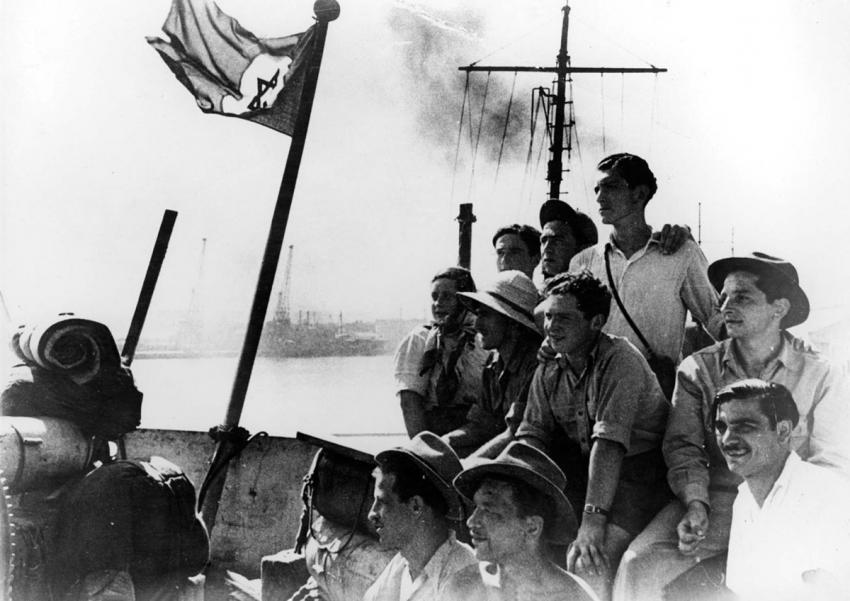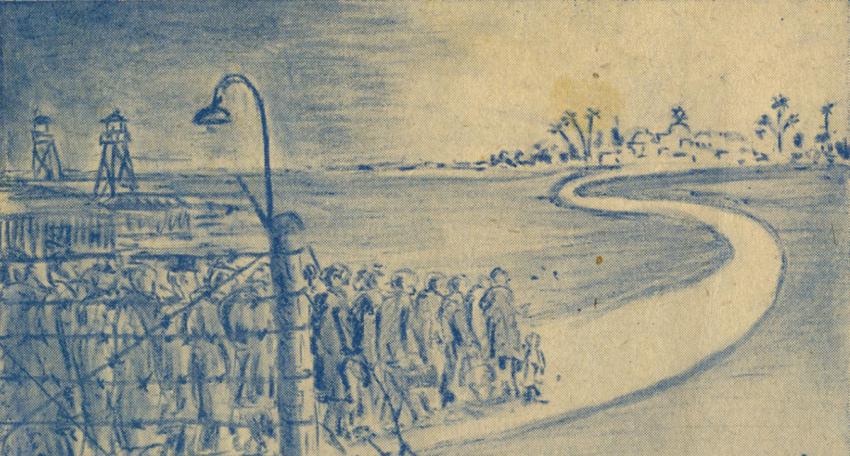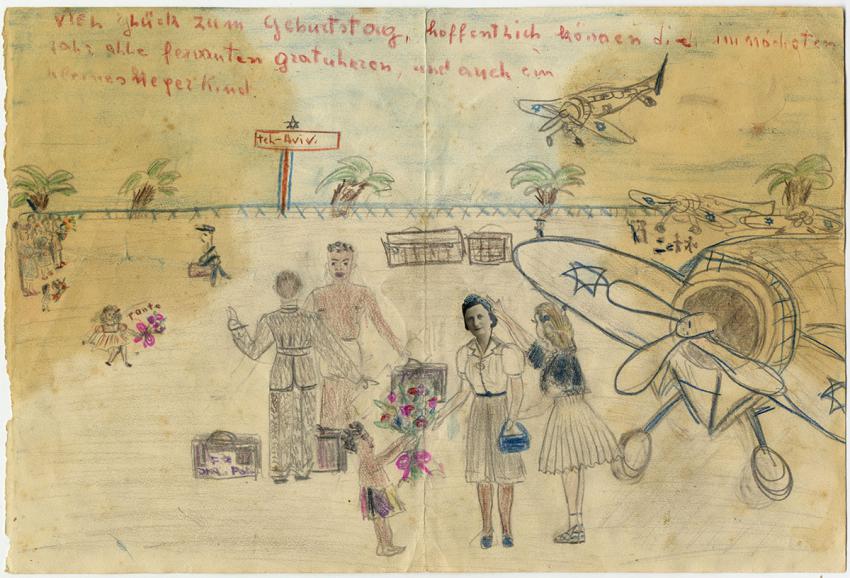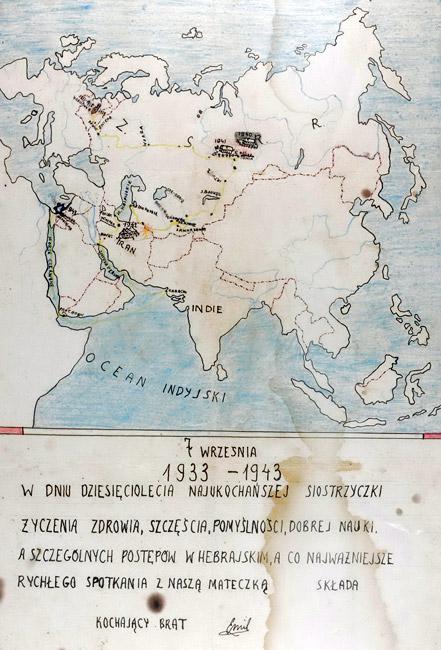29 May 2018
“I see a sign that we will meet each other face-to-face in our Land, our Homeland, Eretz Israel.“
Ten-year-old Eliezer Rudnik wrote these words in 1937 to his aunts who had immigrated to Eretz Israel. The letter, written in Hebrew, is surrounded by rows of Yiddish that his parents wrote due to lack of pages. Aryeh and Sarah Rudnik and their son Eliezer were the only Jews living in the Ukrainian village of Kosmaczow. They were shot in 1942 by a killing pit after the German occupation. Eliezer's letter is just one of the hundreds of items now on display in a new exhibition at Yad Vashem, the World Holocaust Remembrance Center, entitled "They Say There Is a Land: Longings for Eretz Israel during the Holocaust."
This exhibition, which opened today in the Auditorium Exhibitions Hall of Yad Vashem's Museums Complex, features artworks, artifacts, diaries, letters and testimonies collected by Yad Vashem over the years, all of which illustrate how Jews yearned for Eretz Israel during and immediately following the Shoah in the years 1933-1948. The exhibition is divided into three chapters. The first chapter presents how Jews viewed their connection to and longing for the Land of Israel during the time of the rise of the Nazi party to power in Germany until the outbreak of World War II. It was during this period that Jews searched for asylum in various countries, including Eretz Israel. The second chapter focuses on the years 1940-1944 – from the period of the ghettos to extermination. During this stage, the Jewish communities in Europe dwindled, and under their daily struggle for survival, many Jews found themselves distanced from Eretz Israel to the point of disengagement; however, their hearts' yearning for the Land was never stronger. The third chapter focuses on the period of the aftermath of the Holocaust, the Displaced Persons camps in Europe and the detention camps in Cyprus, until the establishment of the State of Israel. At this time, many survivors felt that only in the Land of Israel would they be able to regain their stature and build a full Jewish communal and personal life.
"The longings for Zion and the Land of Israel has been a cornerstone of Jewish identity for generations, manifested in many different forms," Yad Vashem Chairman Avner Shalev stated at the exhibition's opening. "While the Zionist movement was not embraced by the majority of Jews in Europe during the Nazi rise to power, through the course of the Holocaust and in its aftermath it became increasingly popular. This exhibition portrays the ways in which Jews before, during and after the Shoah expressed their dreams for a brighter future in the Land of Israel, and their fervent hope to rebuild their lives here."
The exhibition's title is the same as a well-known poem written by celebrated Hebrew poet Shaul Tchernichovsky in 1923 in Berlin. The poem brings up existential questions that characterized the Jewish people's struggle with its future in the interwar period, as well as the forces of dream versus reality, and hope versus despair.
"I am so moved to see my map and the story of my family displayed here at Yad Vashem," said Ilana Karniel (née Elina Landau), one of the "Tehran Children" rescued during the Holocaust. "My brother Emil-Emmanuel [who created the map and gave it to Elina] was truly a special person. Despite his young age, he understood very well the world he lived in. In his diary, which he kept throughout our journey, he writes about his dreams of coming to Eretz Israel, despite growing up in a secular family in Warsaw."
"They Say There Is a Land" was curated by Yad Vashem's Museums Division Director Vivian Uria. Yad Vashem Chief Historian Prof. Dina Porat is the Historical Advisor for the exhibition.











